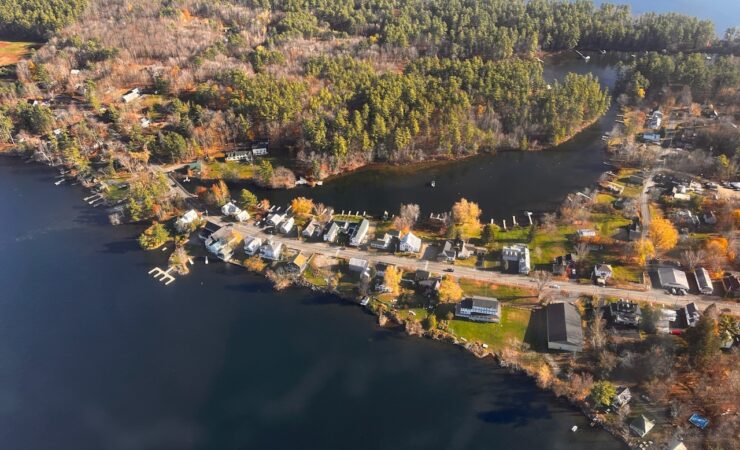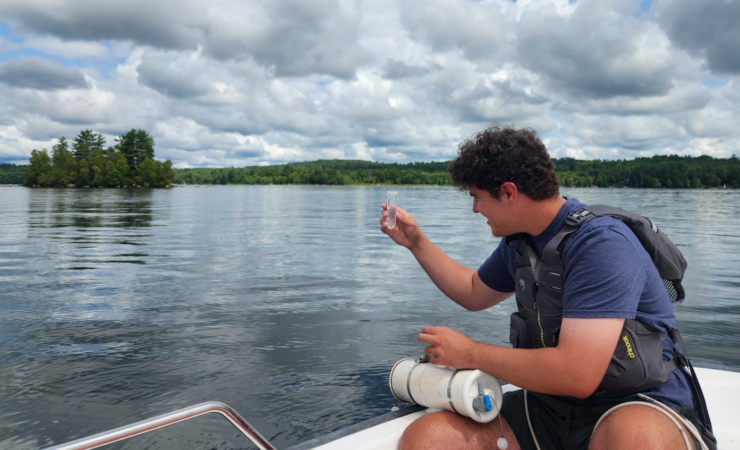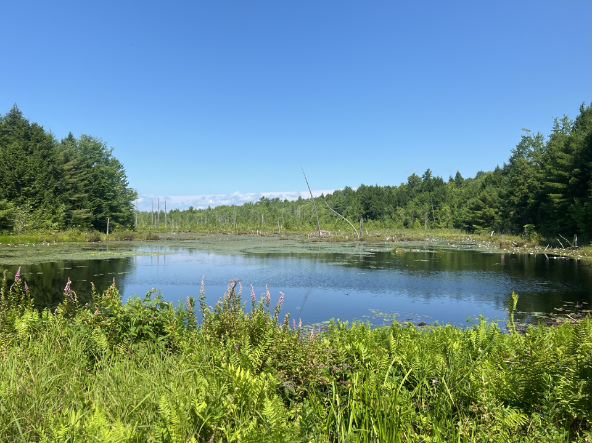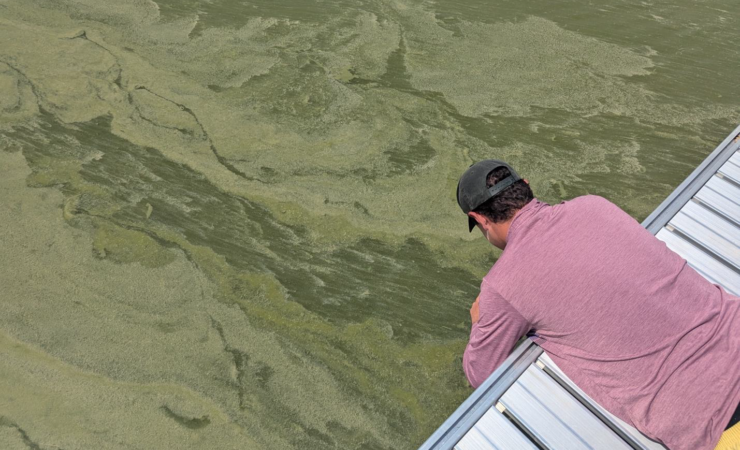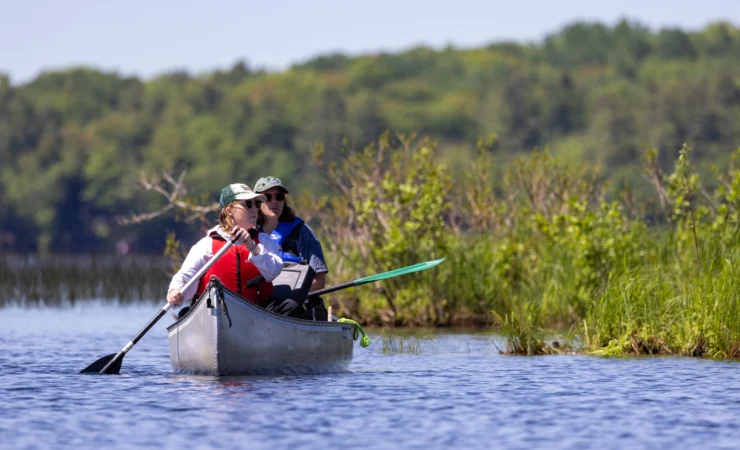
The grass is not always greener. Expansive lawns that slope down to the water risk fouling water quality.
Grass has shallower root systems than trees, shrubs, native ground covers and other types of vegetation. Deeper roots more effectively hold dirt in place. Dirt contains the naturally occurring element phosphorus – a key nutrient on which algae feeds. So, the more dirt – and phosphorus – washed into a lake by stormwater runoff, the higher the likelihood of an algal bloom.
Turf also fails to slow and absorb stormwater runoff as well as other types of vegetation and duff – organic matter such as leaves and pine needles decaying on a forest’s floor. Stormwater gains velocity as it passes over grassy declines, increasing erosion into waterbodies.
That’s why the State of Maine passed a law that prohibits raking duff within 75 feet of shorelines – to preserve absorbent material that impedes stormwater runoff. The statewide conservation organization Maine Lakes recommends limiting lawn size, mowing less often, stashing rakes and leaving clippings on the ground.
Leaving clippings on the ground also negates the need to fertilize lawns – another way grass can threaten a lake’s health. Phosphorus is a key ingredient in fertilizers. Applying fertilizer to a lawn risks phosphorus being washed into a waterbody, again feeding algae. Further, fertilizers, herbicides and pesticides can harm children, pets and aquatic life.
Stuart Cole, 7 Lakes Alliance’s erosion control project coordinator, offered these suggestions for mitigating the impact of lakefront lawns:
- Request a LakeSmart or Youth Conservation Corps evaluation to identify ways to control erosion from a lakefront property. Request an evaluation by emailing stuart.cole@7lakesalliance.org. Recommendations from LakeSmart evaluations can be implemented by 7 Lakes Alliance’s YCC, which provides the labor at a discounted rate.
- Plant a vegetative buffer between the lawn and the lake. Blueberry bushes are especially effective. (Plus, fresh blueberries!)
- Let lawns revert to their natural states, mowing only once a year.
- Regrade lawns to flatten slopes and reduce the speed of runoff.
- Install a rain garden – a vegetated, low-lying area that collects runoff.
For more information, contact Cole or call 207-495-6039.



